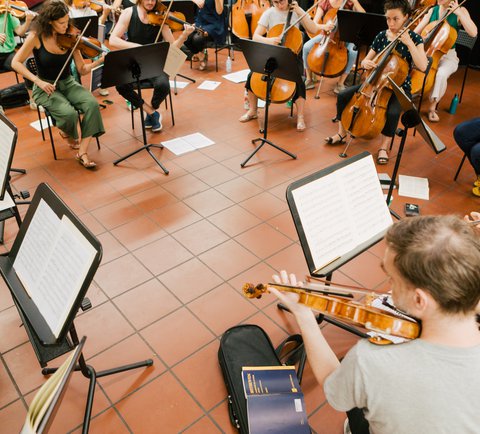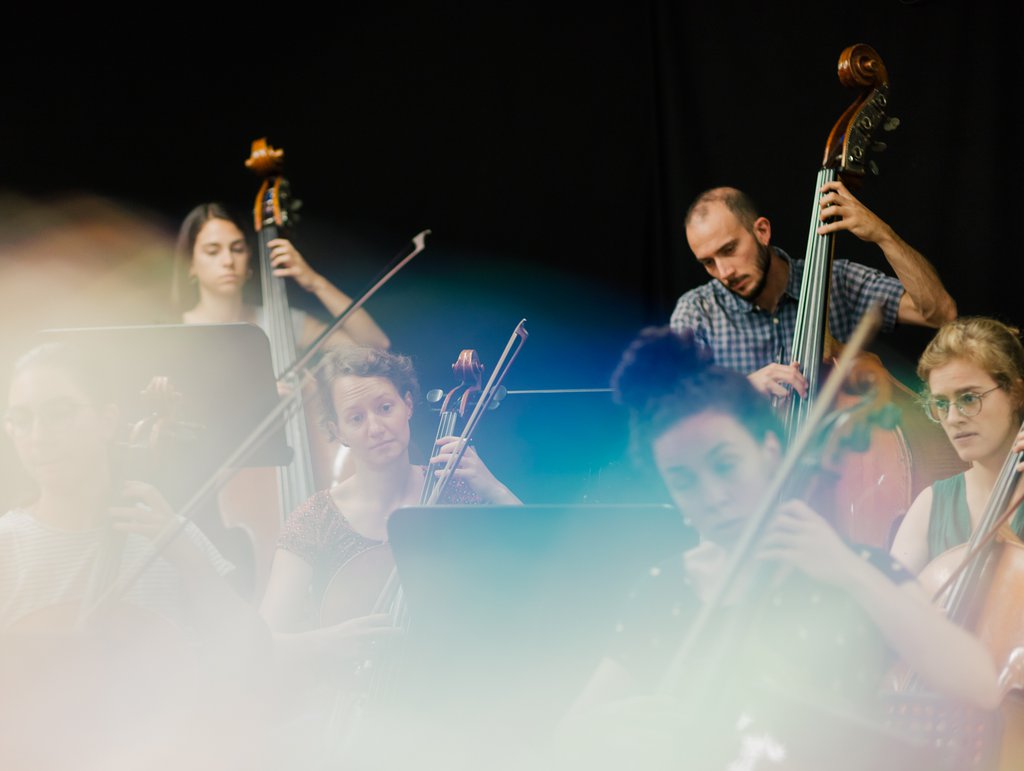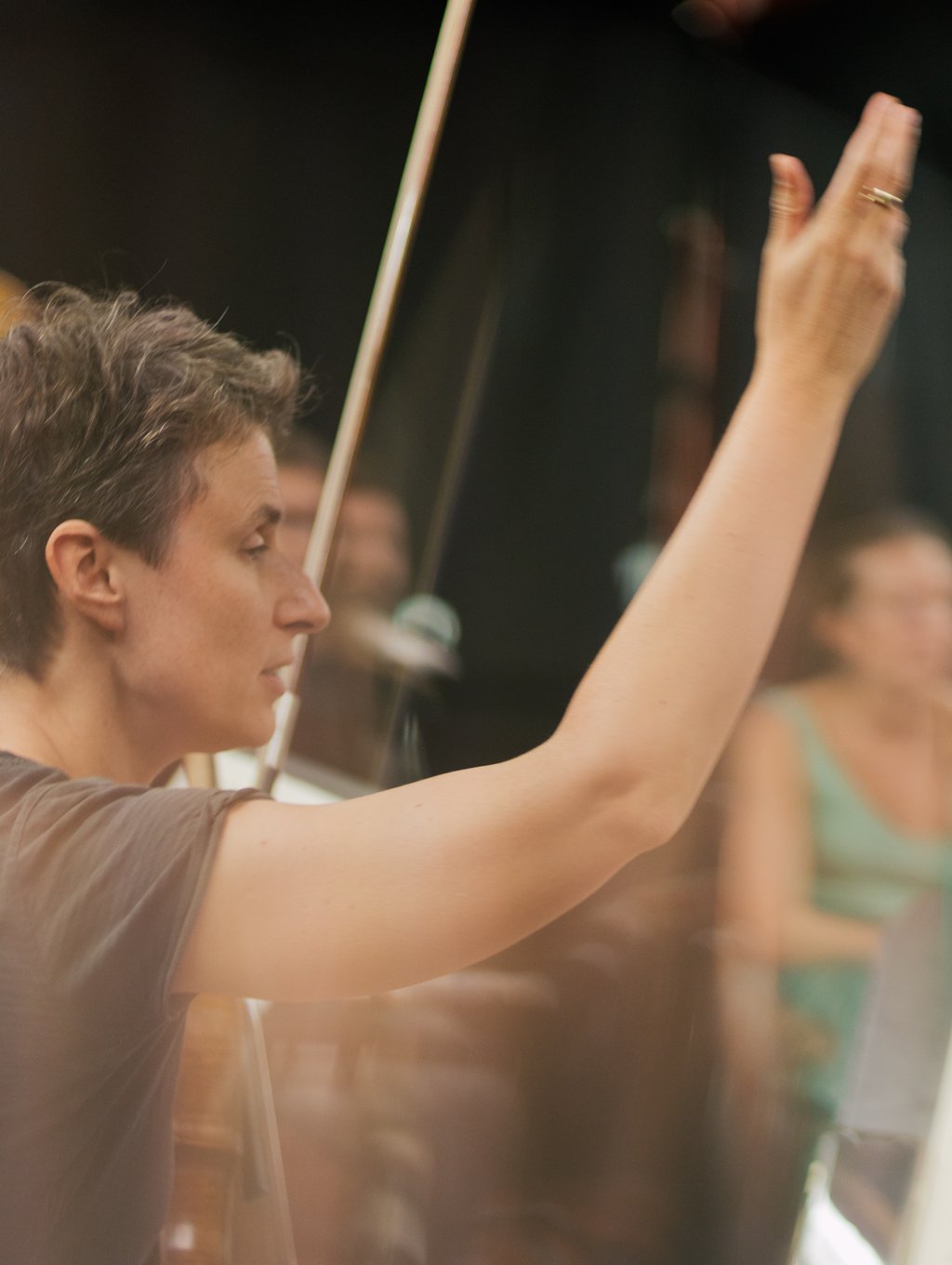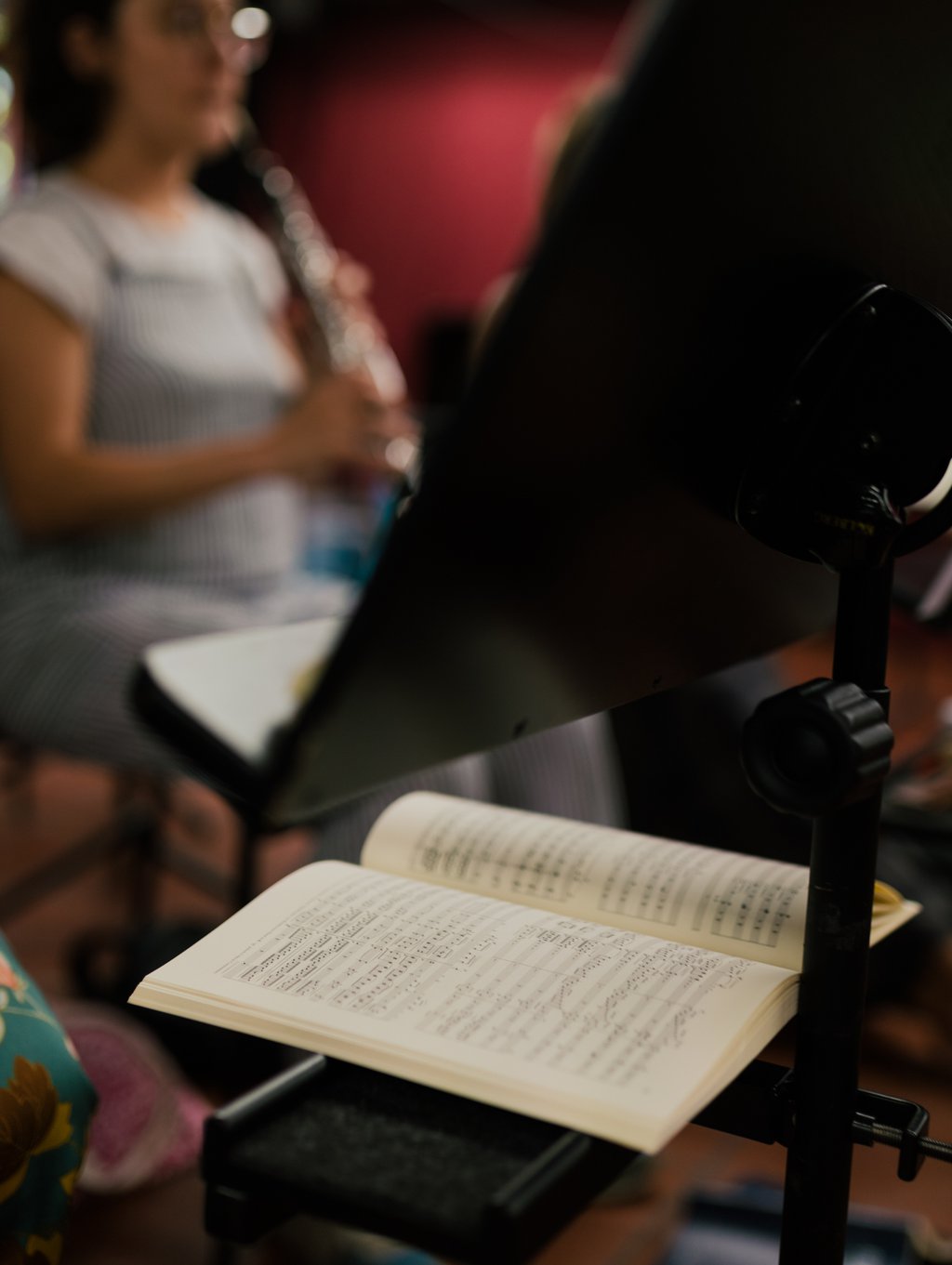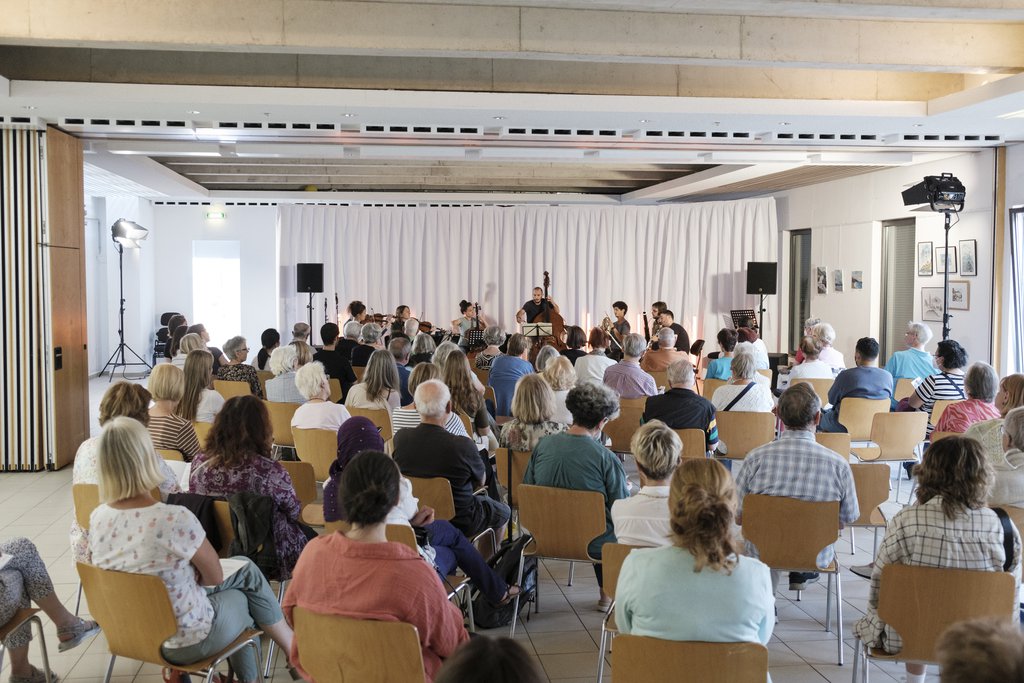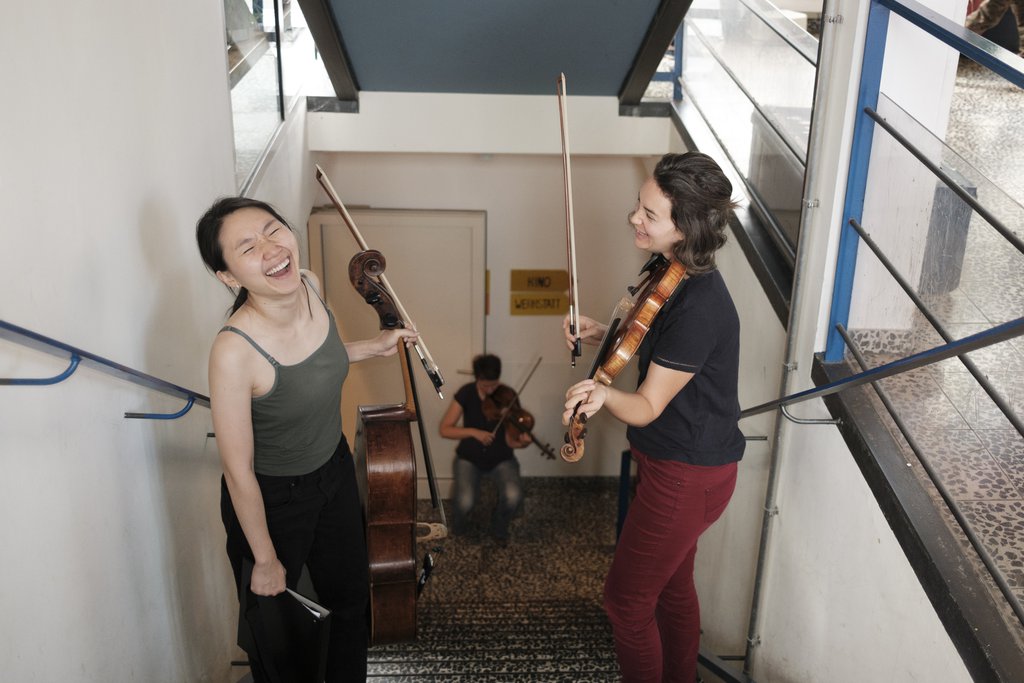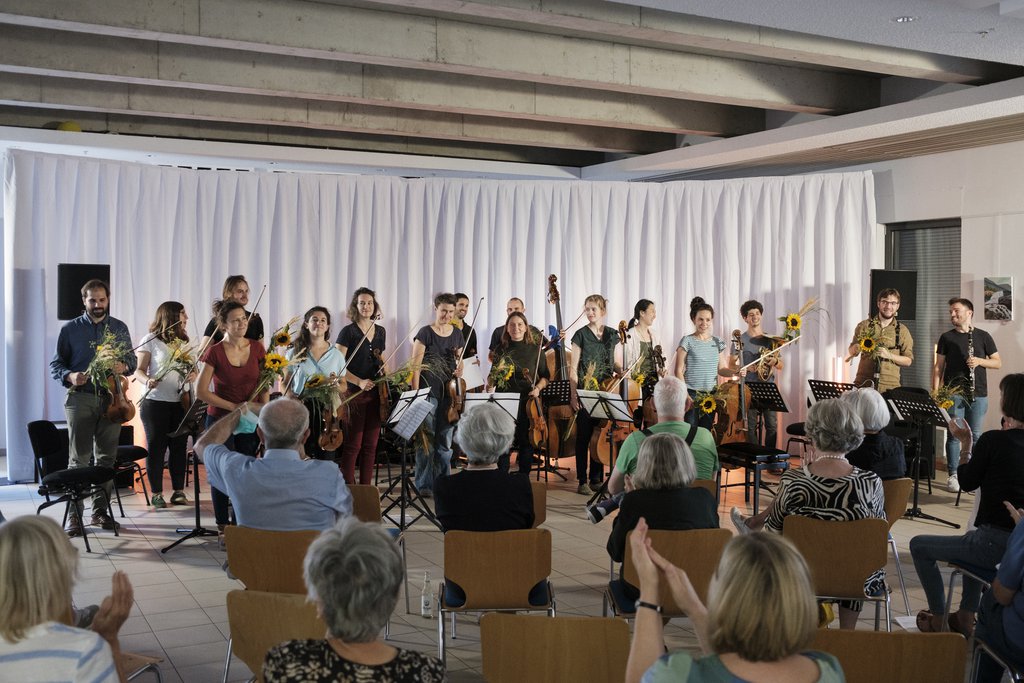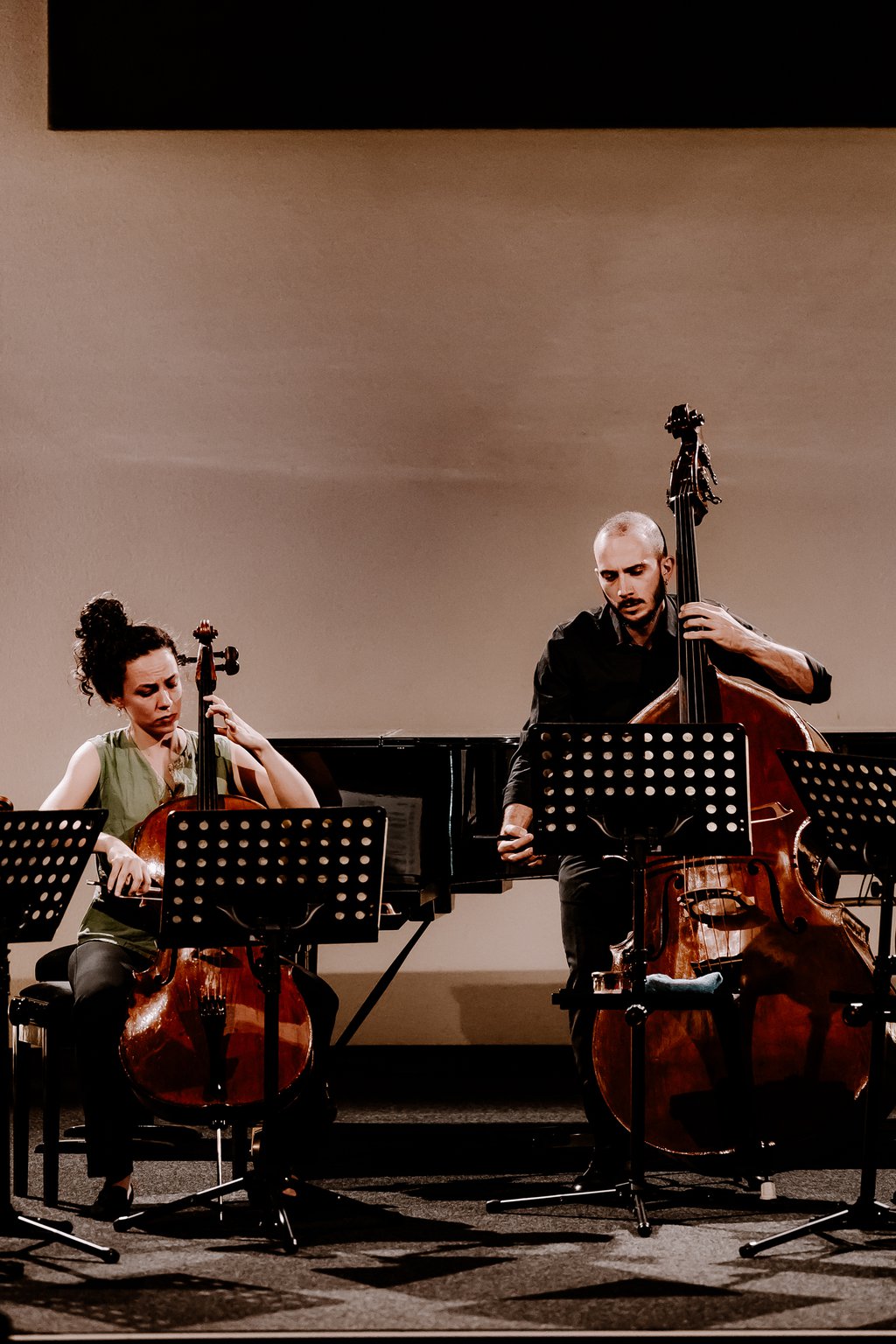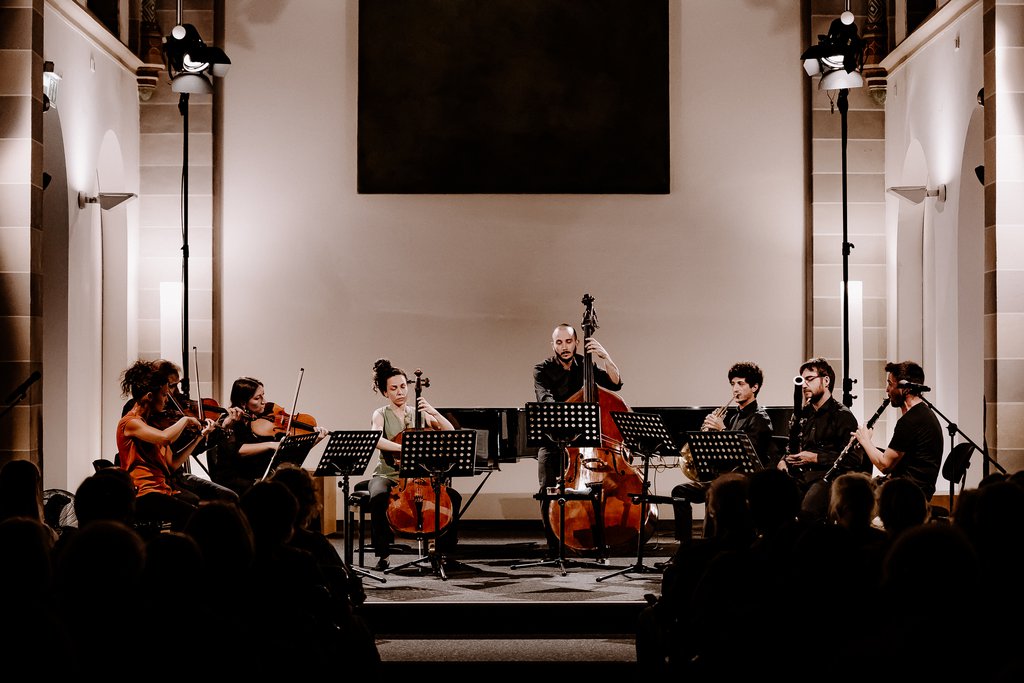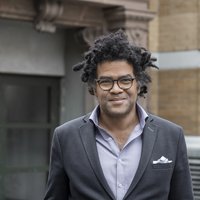Collective with many faces in residence at Beethovenfest 2022
Spira Mirabilis could be freely translated into wondrous spiral of symmetry. The idea of the ensemble: They want to create total equity between all participants in a musical event, musicians and listeners. That is why there are no fixed positions, no hierarchy of authorities and no conductor.
At Beethovenfest, the international group of musicians played in varying formations and at different locations: As string octet or mixed octet with strings and winds at intimate after-work-concerts at Beethovenhaus and Leoninum, in a joint concert with other artists such as Ensemble Resonanz at Viktoriabad, at a community district festival day at the district Brüser Berg, and as symphony orchestra at Pantheon Theater. No residency ensemble 2022 curated a residency as diverse and flexible as Spira Mirabilis.
